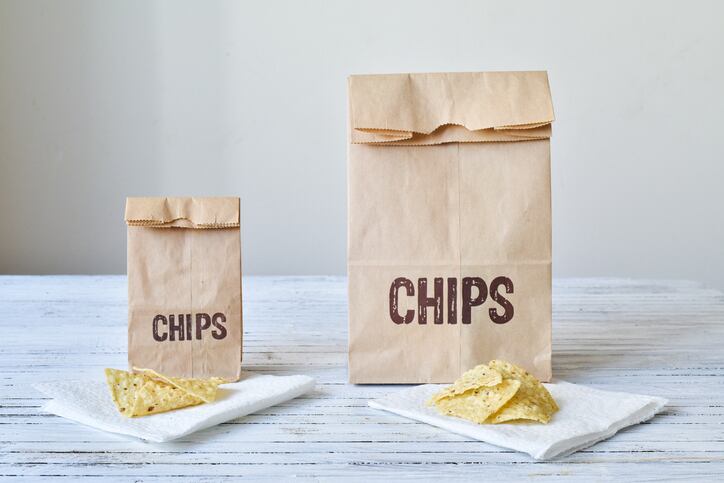Since the pandemic began, more shoppers have gravitated toward smaller-sized packages of food and beverages as a way to manage how much they consume, according to new research commissioned by Georgetown University’s Portion Balance Coalition, in partnerships with the Natural Marketing Institute.
The survey of 1,000 adults published late last year found 58% of consumers are eating smaller portions compared to before the pandemic as a way to help manage their weight, and 42% note eating appropriate portion sizes at each meal or snack is an important component of healthy eating for them.
To help keep portions in check, the survey found half of consumers choose more portion-controlled snacks, such as 100-calorie packs. Likewise, 45% of respondents buy smaller packages of food items to help manage how much they eat, and 44% do the same for beverages. Both of these are up from before the pandemic, when 38% purchased smaller packages of food and 40% smaller beverages to help limit their intake.
More than half of respondents admitted to buying multi-packages with predetermined portion sizes, a practice that is more heavily weighted among consumers who make more than $100,000 a year, are college educated, and households with children, according to the survey.
Smaller portions also could help reinforce sales of more indulgent items because they allow consumers to enjoy a product with less guilt, Hank Cardello, chair of Georgetown University’s Portion Balance Coalition, notes in a statement.
Smaller portions paired with multi-packs could boost value perception
The study’s findings reinforce previous research by the International Food Information Council that found eating appropriate portion sizes is considered a top factor of a healthy eating pattern.
Likewise, Mondelez International’s third annual State of Snacking report, published last February, found older consumers seeking indulgent options also look for portion control and better-for-you snacks with less sugar and fat and more positive nutrition, including fortification.
Growing consumer preference for smaller portion-controlled packs plays nicely with an increased interest in multipacks as a way to save money by buying in bulk but still serving the different needs of members of their households.
A prove strategy
Many CPG players already are executing against this demand.
At PepsiCo, multipack sales are the fastest growing portion of its business – prompting it to bundle anywhere from 18 to 50 packs of different varieties together.
In addition, the National Confectioners Association’s Always A Treat initiative includes participating companies changing packaging to limit calories to 200 or under in at least half of the single serve products they offer.

